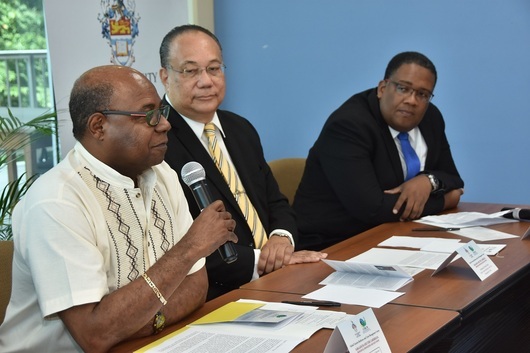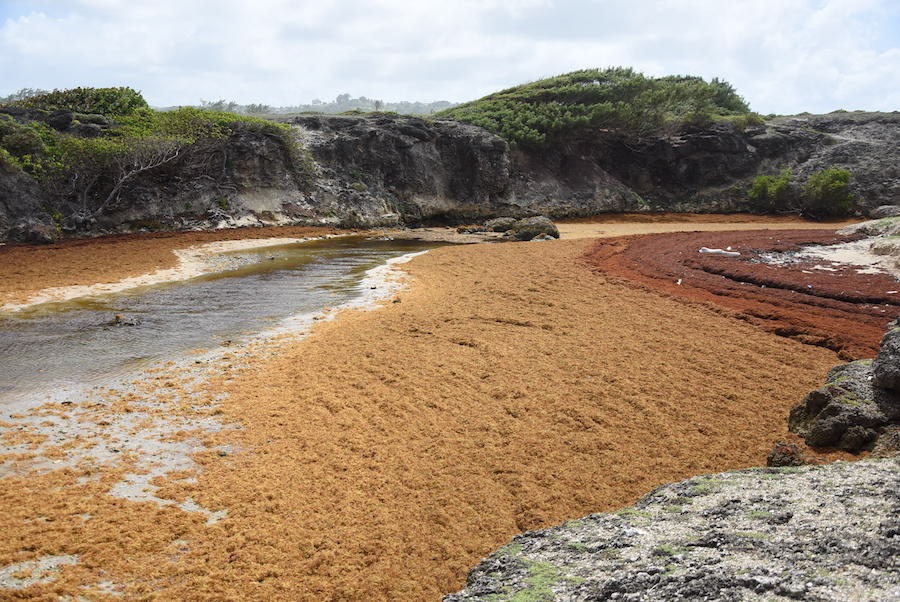The unprecedented levels of sargassum seaweed that washed up on Caribbean beaches in 2018 resulted in estimated clean-up costs of US$120 million, according to Minister of Tourism and Co-Chair of the Global Tourism Resilience and Crisis Management Centre (GTRCM), Edmund Bartlett.
In addition to costly removal, tourism stakeholders have become increasingly concerned about the seaweed’s unsightly appearance, visitor complaints and the possibility of reputational damage, the Tourism Minister noted.
“As active stakeholders in the sector we understand the inestimable value of tourism to stable and prosperous Caribbean economies. Tourism remains the single most important catalyst of sustained economic livelihoods in the region,” Minister Bartlett said in opening remarks at the GTRCM Roundtable on Sargassum on July 26 at the University of the West Indies’ Region Headquarters, Mona.
The Caribbean is the most tourism-dependent region of the world, where it is the main economic sector in 16 out of 18 Caribbean states and supports close to three million jobs.
Noting forecasts of a 12 per cent growth in tourist arrivals to the region for 2019, Minister Bartlett said, “Despite these promising indicators and its (tourism’s) historical resilience, we remain well aware that the tourism sector is very fragile and prone to disruptive elements. The last ten years have witnessed an evolution of the threats facing the sector. These threats have become more unpredictable and more devastating in their impact and certainly more difficult to manage.”
Sargassum is one such threat. Accordingly, the GTRCM saw an urgent need to facilitate the coming together of regional tourism and environmental stakeholders to share ideas, best practices and possible solutions to the adverse effects sargassum in having on national and regional economies.
Since 2011, thick mats of seaweed have increased in density to generate an 8850-kilometer-long belt (weighing 20 million metric tons) known as the Great Atlantic Sargassum Belt that extends from West Africa to the Caribbean Sea and Gulf of Mexico. Scientists believe this algal explosion in the Atlantic Ocean and Caribbean Sea could signify a new normal.





